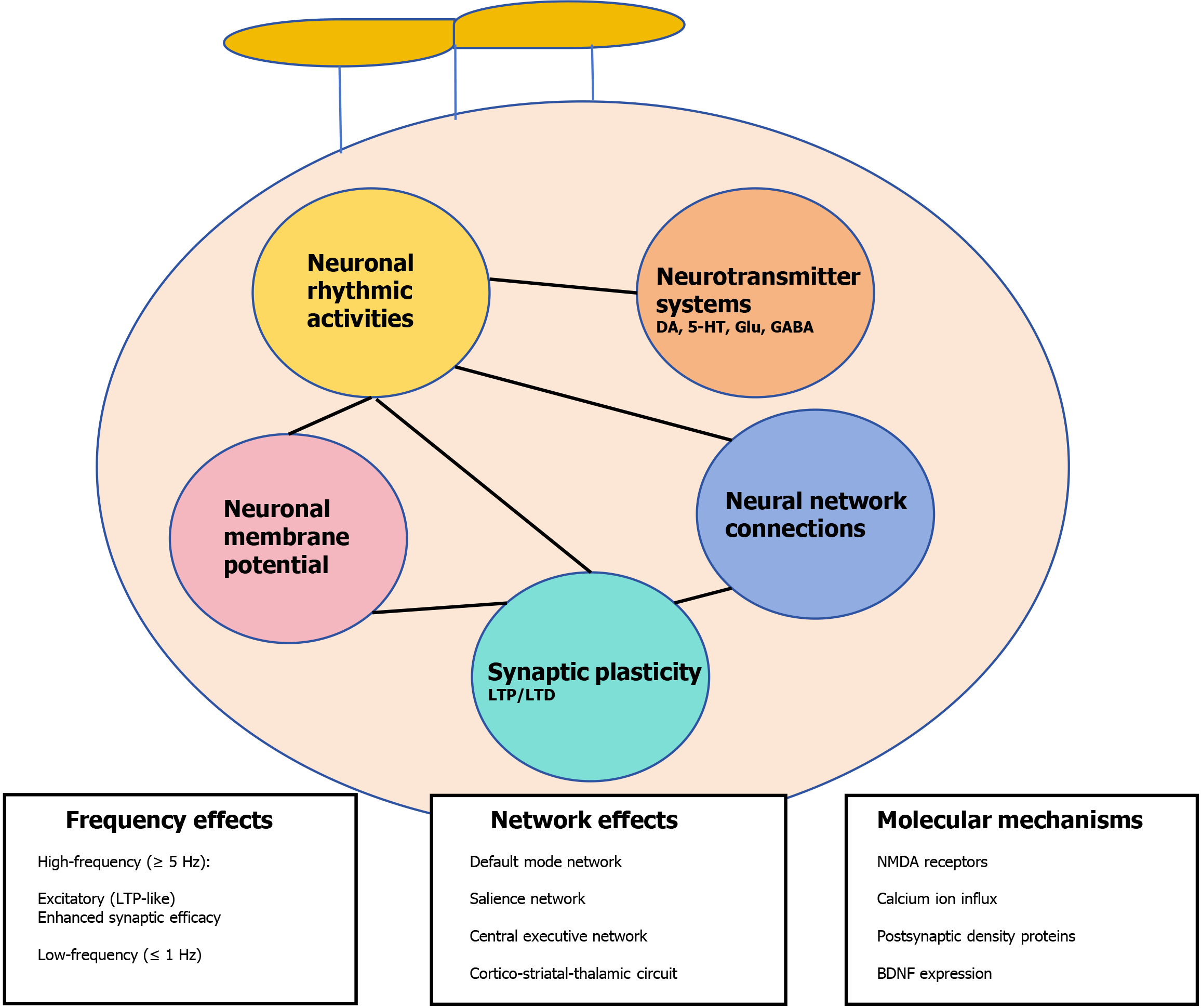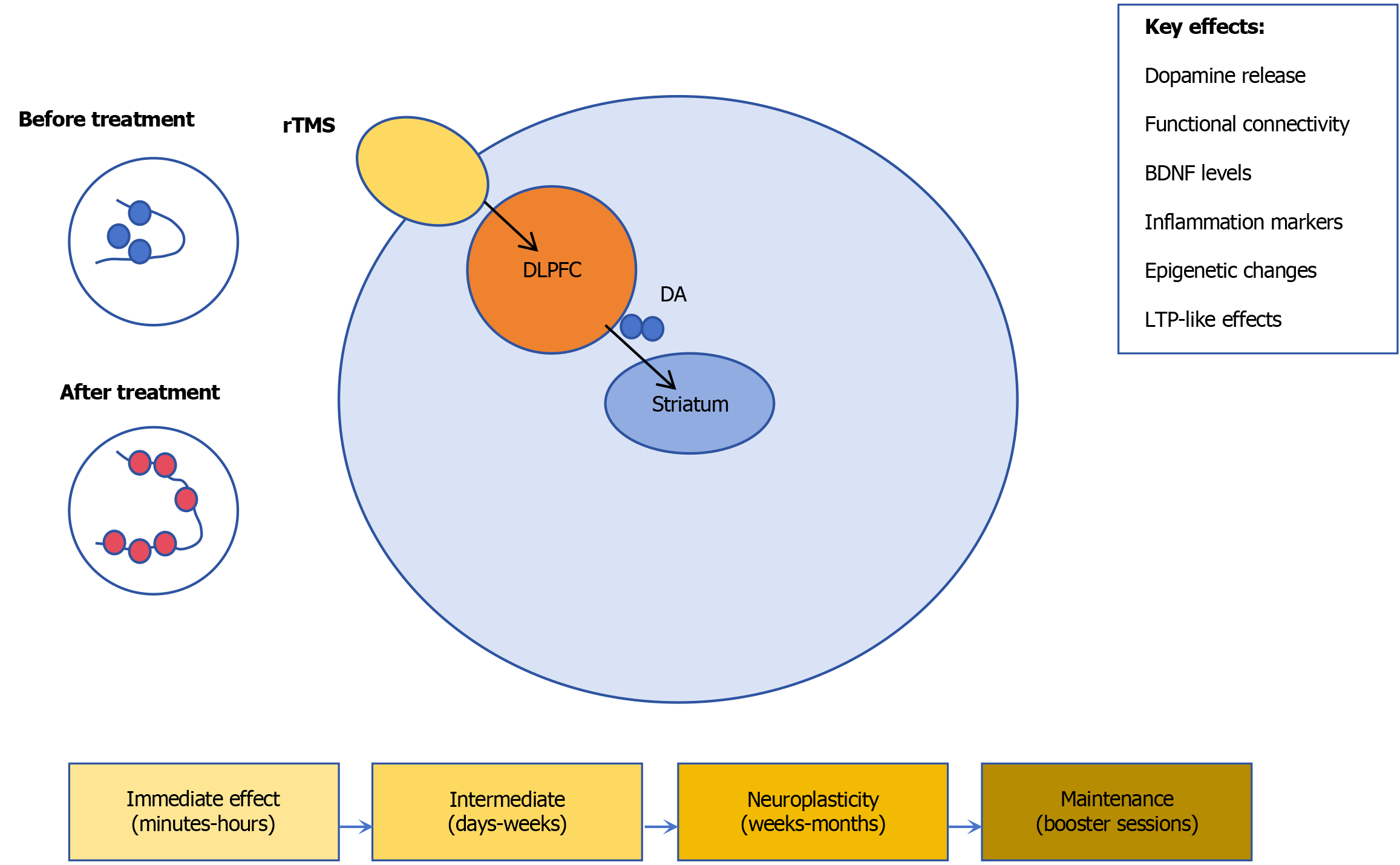Copyright
©The Author(s) 2025.
World J Psychiatry. Sep 19, 2025; 15(9): 108497
Published online Sep 19, 2025. doi: 10.5498/wjp.v15.i9.108497
Published online Sep 19, 2025. doi: 10.5498/wjp.v15.i9.108497
Figure 1 Neurophysiological basis and working mechanism of transcranial magnetic stimulation.
Transcranial magnetic stimulation (TMS) works by using magnetic fields to influence brain activity through five key mechanisms: Changing neuronal membrane potentials, modifying synaptic plasticity, reshaping neural networks, regulating neurotransmitter systems, and altering neuronal rhythms. High-frequency stimulation (≥ 5 Hz) excites neurons while low-frequency stimulation (≤ 1 Hz) inhibits them. TMS affects major brain networks and molecular pathways including N-methyl-D-aspartic acid receptors, calcium signaling, and brain-derived neurotrophic factor expression. This comprehensive action across multiple neurobiological levels explains TMS’s effectiveness in treating conditions like Parkinson’s disease. DA: Dopamine; 5-HT: 5-hydroxytryptamine; Glu: Glucose; GABA: Gamma-aminobutyric acid; LTP: Long-term potentiation; LTD: Long-term depression; NMDA: N-methyl-D-aspartic acid receptor; BDNF: Brain-derived neurotrophic factor.
Figure 2 Mechanism of Action: Regulation of prefrontal-striatal dopamine pathway and promotion of neuroplasticity.
The diagram shows how repetitive transcranial magnetic stimulation (rTMS) treats Parkinson’s depression by stimulating the dorsolateral prefrontal cortex brain region to increase dopamine flow to the striatum. It compares fewer synaptic connections before treatment with more connections after treatment. Key effects include increased dopamine, improved brain connectivity, higher brain-derived neurotrophic factor levels, and reduced inflammation. Treatment progresses through four phases: Immediate effects (minutes-hours), intermediate changes (days-weeks), neuroplasticity (weeks-months), and maintenance sessions. The image effectively illustrates rTMS’s dual action of enhancing dopamine pathways and promoting brain plasticity to relieve depression in Parkinson’s patients. rTMS: Repetitive transcranial magnetic stimulation; DA: Dopamine; DLPFC: Dorsolateral prefrontal cortex; LTP: Long-term potentiation; BDNF: Brain-derived neurotrophic factor.
- Citation: Zhou XL, Li Y, Xia W, Zheng YY, Wu AP. Advances in transcranial magnetic stimulation for psychological symptom management in Parkinson’s disease. World J Psychiatry 2025; 15(9): 108497
- URL: https://www.wjgnet.com/2220-3206/full/v15/i9/108497.htm
- DOI: https://dx.doi.org/10.5498/wjp.v15.i9.108497










